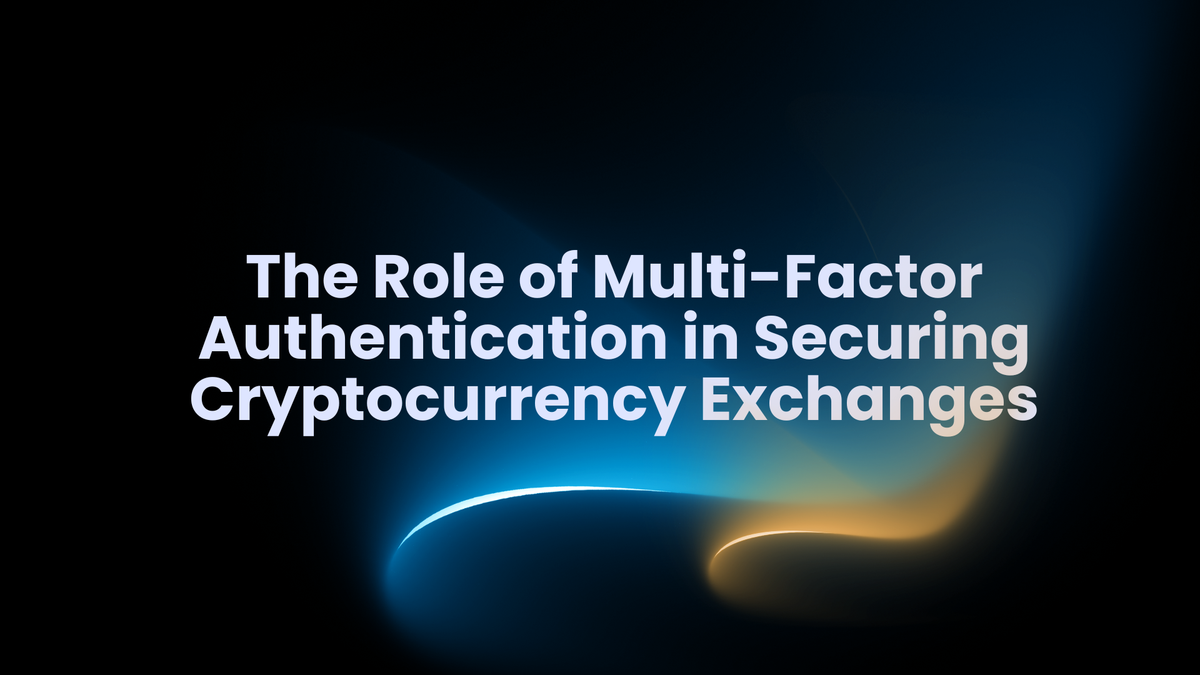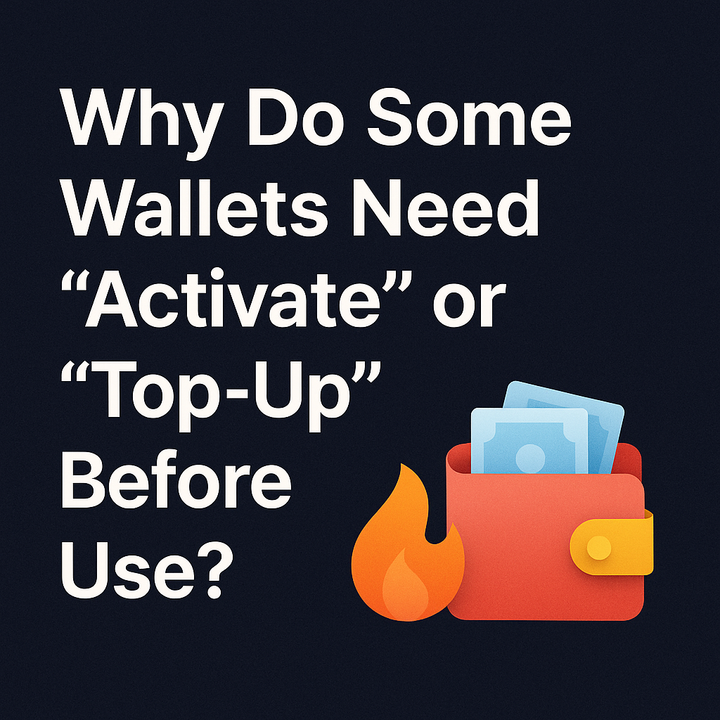The Role of Multi-Factor Authentication in Securing Cryptocurrency Exchanges

Introduction
Cryptocurrency exchanges have revolutionized finance by enabling the trading of digital assets in a decentralized and borderless manner. However, with great innovation comes great risk. Given that crypto transactions are irreversible and that digital assets are prime targets for cybercriminals, security is paramount. One of the most potent security measures used today is multi-factor authentication (MFA). MFA is designed to verify a user’s identity by requiring multiple independent credentials, making it far more difficult for unauthorized access to occur.
What is Multi-Factor Authentication (MFA)?
Multi-factor authentication (MFA) is an advanced security measure that goes beyond the conventional single-password system. Instead of relying solely on a password, a static piece of knowledge, MFA requires users to provide additional verification factors before gaining access to an account. These factors typically fall into three broad categories:
- Something You Know: This is usually a password or a PIN.
- Something You Have: Often a physical device, such as a smartphone app that generates time-sensitive codes, SMS-based codes, or even a hardware security token.
- Something You Are: This involves biometric data such as fingerprints, facial recognition, or iris scans.
By integrating these multiple layers of security, the process creates a much more sophisticated barrier for would-be attackers. Even if a hacker compromises one factor (e.g., passwords obtained via phishing), they would still need to bypass the remaining factors to gain access.
The Evolution of Authentication: From 2FA to MFA
Traditionally, many platforms relied on two-factor authentication (2FA), which typically combines a password with a second factor like an SMS code or an authenticator app. Although 2FA is a significant improvement over single-factor authentication, the increasing sophistication of cyberattacks has led to the adoption of MFA, where more than two forms of verification are employed.
The expansion from 2FA to MFA is a response to both the growing complexity of cyber threats and the higher stakes involved in securing digital assets. With cryptocurrency exchanges processing millions of dollars in transactions, the vulnerabilities of using only two factors have become apparent. MFA addresses this by adding extra layers of security, often combining traditional credentials, physical tokens, and biometric information to provide a comprehensive security framework.
Unique Security Challenges of Cryptocurrency Exchanges
Cryptocurrency exchanges are inherently attractive targets for cybercriminals due to the high volume of transactions and the irreversible nature of digital currency transfers. They are susceptible to a range of malicious activities, including:
- Phishing Attacks: Cybercriminals often trick individuals into divulging their login information or MFA codes by mimicking legitimate websites or sending fraudulent emails.
- SIM Swapping: In attacks involving SMS-based authentication, hackers can hijack a victim’s phone number to intercept verification codes.
- Account Takeovers: If hackers gain access to an exchange account by compromising a password or other credentials, they can immediately siphon off funds.
- Insider Threats: Employees with privileged access, if compromised or acting with malicious intent, might bypass standard security measures.
Implementing MFA directly addresses these vulnerabilities by requiring additional verification layers; an attacker would need to bypass several separate security barriers rather than simply stealing a single password.
How MFA Enhances Security on Crypto Exchanges
- Mitigating Automated Attacks: Automated bots and credential stuffing attacks have become a regular concern in the online security landscape. According to Microsoft, enabling MFA can block up to 99.9% of such automated attacks. With an additional layer or two of authentication, even if a hacker obtains a password via database breaches or phishing, the system remains secure without the second or third layer of verification.
- Reducing the Impact of Weak or Compromised Passwords: Password reuse is a common problem, and when users recycle passwords across multiple sites, the risk of compromise magnifies. MFA ensures that even if a user's password is compromised on another platform, the additional verification required for the crypto exchange remains intact. This makes it far more challenging for hackers to gain unauthorized access.
- Enhancing Trust and User Confidence: For cryptocurrency exchanges, trust is a critical asset. Customers need to feel confident that their funds are safeguarded against theft and hacking. Implementing MFA not only significantly reduces the possibility of unauthorized access but also enhances the exchange’s reputation as a trusted platform. This assurance can lead to increased user adoption and retention, and it provides an important competitive edge in an increasingly crowded market.
- Securing Critical Transactions: MFA is not only used at login but can also be integrated into sensitive transactions, such as withdrawals or changes to account settings. This ensures that even if an account is compromised at the login stage, additional authentication is required to perform critical operations involving funds. This layered approach helps contain the potential damage from any single breach.
MFA in Practice: Implementation in Cryptocurrency Exchanges
Implementing MFA in cryptocurrency exchanges involves collaboration between developers, cybersecurity experts, and regulatory compliance teams. Here are some of the common MFA methods that exchanges use:
- Authenticator Apps: These apps generate time-sensitive one-time passwords (OTPs). They are more secure than SMS because they are not susceptible to SIM swapping.
- Hardware Tokens: Devices like YubiKey provide a physical factor that must be present at the time of login. Although more expensive and requiring users to carry an extra device, hardware tokens offer a high level of security.
- Biometric Authentication: Facing fewer hurdles once set up, biometric measures like fingerprint or facial recognition are becoming widespread, especially in mobile apps.
- SMS-Based Codes: While still popular due to ease of use, SMS-based verification has known vulnerabilities and is often supplemented with other methods.
Benefits and Limitations of MFA
While MFA offers significant security benefits, it is essential to understand its potential limitations and challenges:
Benefits
- Strengthened Security: With multiple layers of verification, the likelihood of a successful breach is minimized.
- Deterrence of Automated Attacks: MFA blocks nearly all automated login attempts that rely solely on stolen passwords.
- User Trust: MFA enhances the confidence of users, essential for customer retention and positive reputation.
- Reduced Fraud Risk: By requiring more than one form of verification, fraud becomes more complicated and less frequent.
Limitations
- User Experience: More steps during login or transactions can lead to user friction. Some users may find MFA cumbersome or challenging to set up.
- Dependence on Devices: If a user loses their secondary device (for instance, a smartphone), they could be temporarily locked out unless backup procedures are in place.
- Implementation Costs: Developing and maintaining robust MFA systems incurs financial and operational costs.
- False Sense of Security: While MFA greatly enhances protection, it is not infallible. A determined attacker might still target other aspects of the exchange’s infrastructure.
Despite these challenges, the benefits of MFA far outweigh the limitations, particularly in the high-risk environment of cryptocurrency exchanges.
Conclusion
The integration of multi-factor authentication (MFA) is no longer optional—it is a necessity in the realm of cryptocurrency exchanges. By requiring multiple forms of user verification, MFA not only fortifies defenses against automated attacks, phishing, and account takeovers but also enhances user confidence and trust. As cybercriminals become increasingly sophisticated, MFA stands as a frontline technology that helps secure digital assets and maintain the integrity of the cryptocurrency ecosystem.
For cryptocurrency exchanges, the investment in MFA is an investment in both security and reputation. As technologies evolve and new threats emerge, regular updates and the integration of adaptive measures will be key to staying secure. By combining traditional credentials with hardware tokens and biometric factors, exchanges can create a multi-layered security net that is both resilient and adaptable.
References
- Cointelegraph: Understanding MFA in Cryptocurrency
- Complete Guide on MFA in Cryptocurrency : ACryptoFinance
- Crypto Security Best Practices – Learning Crypto
- Guarding Your Crypto Kingdom – CryptoCurrency Certification Consortium
- Multi-Factor Authentication in Cryptocurrency – Seed.Photo
MITOSIS official links:
GLOSSARY
Mitosis University
WEBSITE
X (Formerly Twitter)
DISCORD
DOCS



Comments ()